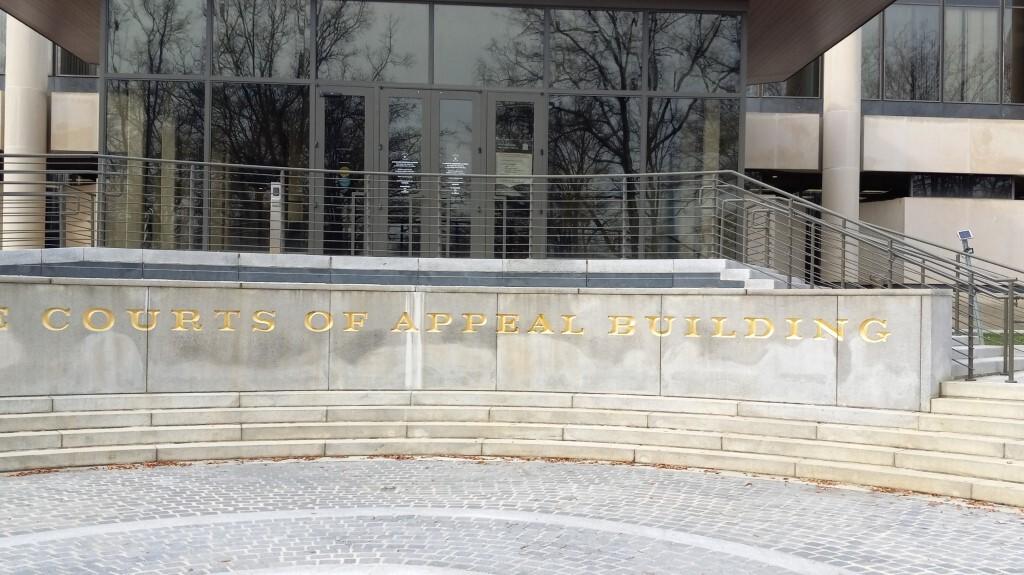Maryland’s highest courts are getting a makeover.
On Wednesday, the seven-member Court of Appeals, for centuries the top rung on the state’s legal ladder, was formally renamed the Supreme Court of Maryland. And the state’s second-highest court, the Court of Special Appeals, was renamed the Appellate Court of Maryland.
The name change became official when Gov. Larry Hogan (R) signed a proclamation announcing that a majority of voters approved a referendum on the proposed change last month. Three-quarters of Maryland voters approved the name change, which appeared as Question 1 on the ballot; 25% of voters opposed it.
The General Assembly approved the referendum at the urging of former Chief Judge Mary Ellen Barbera, who retired a year ago. She believed the old names caused confusion.
“Although the names are changing, Maryland’s highest courts and the entire Judiciary remain steadfastly committed to upholding the rule of law and achieving our mission of providing fair, efficient, and effective justice for all,” said Chief Justice Matthew Fader in a statement after Hogan signed the proclamation Wednesday.
“This is a welcome and much-needed change,” said Chief Judge E. Gregory Wells, head of the Appellate Court. “Hopefully the voter-approved constitutional change in the names of both courts clears up any confusion among the public, lawyers and judges from other jurisdictions about the roles of our respective courts.”
Judges serving on the two courts will now be referred to as the justices of the Supreme Court and the Appellate Court, with the leader of the highest court taking the title chief justice. Until now, the jurists have been called judge and chief judge.
Nothing changes when it comes to the appellate courts’ rules, procedures and precedents, officials stressed. Toward that end, the courts’ Standing Committee on Rules of Practice and Procedure held an emergency meeting online Wednesday to discuss the new names and the various updates that will be needed going forward.
“There are hundreds of references to the former names of those Courts throughout the Maryland Rules,” the court system said in a statement, “and the process of updating those references to conform to this Rule are underway.”
Supporters of the changes said the new names better describe the role the two courts play in Maryland’s legal system. Having a “Supreme” court brings Maryland in line with the vast majority of other states.
“It’s very much overdue,” said former state Attorney General Doug Gansler (D). “There’s no reason, other than nostalgia, to keep the old names.” A one-time law clerk for former Court of Appeals Court Judge John F. McAuliffe, Gansler called the changes “exciting.”
Shaoli Katana, director of advocacy initiatives and member engagement for the Maryland State Bar Association, said the name changes will help both the public and the professionals. “We have in-state members. We have out-of-state members. We have law students, paralegals,” she said. “We have a lot of people who got confused by [the old names] over the years.”
The signage outside the Courts of Appeal Building in Annapolis will not change, said Bradley Tanner, public information officer for the Maryland Judiciary. He said there is “ongoing discussion” about whether to update a sign that points visitors to “The Courts of Appeal Building and State Law Library.”
He said there is no budget for the changes, since the costs associated with them are largely personnel and administrative in nature, he added. Tanner said the Judiciary is not permitted to spend funds on new letterhead until its existing inventory has been used.
Paul Kemp, who has practiced law in Maryland for nearly 50 years, said he liked the state’s traditional names, in part because they made Maryland distinctive. That aside, he said, “it probably is a good idea, so that people from around the state and around the world understand that the [Supreme Court] is the highest court.”
Kemp said he has argued approximately 20 cases before the top courts over his career. One thing that won’t change, he said, is that lawyers who argue their first case before the Supreme Court probably won’t get much sleep the night before.
“They’re probably awake all night, thinking of this, thinking of that,” he said. “They fall off to sleep and then wake up 45 minutes later.”
Unlike in Circuit Court, Kemp said, appeals court judges often start firing questions at attorneys mere seconds after they begin their presentations. “That stays the same,” he said. “No question about it.”
The Supreme Court of Maryland will convene for the first time under its new name on Jan. 6. The court will hold a special ceremony to mark the occasion.
By Bruce DePuyt



Write a Letter to the Editor on this Article
We encourage readers to offer their point of view on this article by submitting the following form. Editing is sometimes necessary and is done at the discretion of the editorial staff.